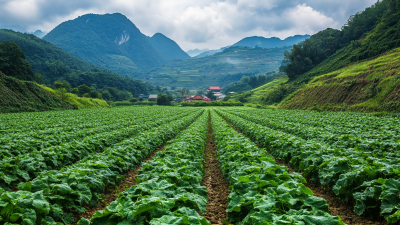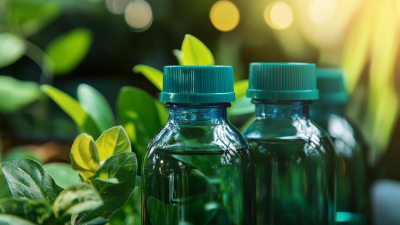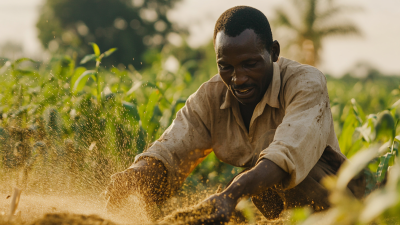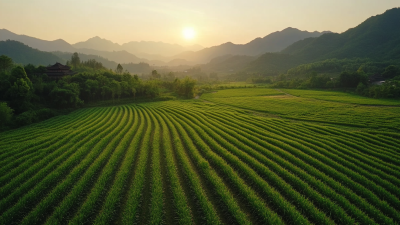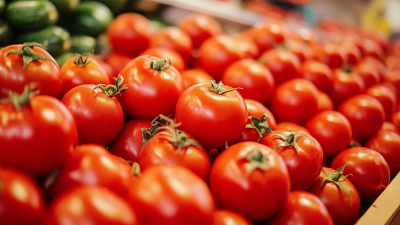 0551-68500918
0551-68500918 





You know, the world of farming is always changing, and keeping those pesky weeds in check is super important if you want to maximize your crop yields and embrace sustainable practices. That's where Glyphosate Weed Killer comes in – it's really taken the spotlight as a go-to solution for farmers struggling with stubborn weed problems. In this guide, we’ll take a close look at the top Glyphosate Weed Killers out there that you can find around the globe. We'll cover different applications in the industry and share some solid data to help you make the best choice. Here at Innovation Meiland (Hefei) Co., LTD., we’re all about pushing the Pesticide Industry forward with ongoing research and fresh, innovative products and formulations. So, why not join us on this journey? We'll explore why picking the right Glyphosate Weed Killer can really change the game for your farming practices and boost the efficiency of your operations.

Looking ahead to 2025, there are some pretty interesting trends shaping the way we think about procurement for glyphosate weed killers. One big thing that's been on everyone’s radar is the growing scrutiny around Glyphosate Use. Countries all over are taking a close look at their agricultural policies, which means stricter rules on how herbicides can be applied. This shift doesn’t just impact what products are available; it also pushes manufacturers and distributors to get creative with their formulations. As a result, we might see a whole new approach to cost structures when it comes to purchasing decisions.
On top of that, there's quite a buzz around sustainable agriculture practices right now, and that’s definitely influencing how procurement strategies are being shaped. Farmers and ag companies are more and more interested in alternatives to glyphosate or finding ways to work it into a broader sustainable management plan. This trend is really driving the development of herbicide-resistant crop varieties and promoting integrated pest management (IPM) strategies. Because of this, procurement folks are feeling the heat to assess not just how well glyphosate-based products perform but also their environmental footprint. They’re on the lookout for options that tick the boxes for sustainability goals while still keeping those pesky weeds at bay.
When it comes to farming, glyphosate weed killers have really become essential allies in tackling those pesky invasive plants. So, in this analysis, we’re diving into the top glyphosate formulations to see how they stack up in terms of effectiveness, how to use them, and what’s out there in different markets. By getting a good grip on the differences between these products—like how concentrated they are or whether they come with any additives—folks in procurement can make smart choices that fit their needs.
Different regions have their own favorites, influenced by things like climate, the types of crops they grow, and local regulations. For example, some formulations are fine-tuned to tackle specific weeds that are common in certain areas, which is why testing them out locally is super important. Plus, let’s not forget about cost-effectiveness; companies are always on the lookout for ways to boost their yields without breaking the bank. By taking a closer look at how these glyphosate products perform, stakeholders can pinpoint the best options that suit their farming methods, all while making sure they’re compliant with environmental standards and keeping their operations sustainable.
You know, the glyphosate herbicide market is really shaking things up these days, especially with all the regulatory changes hitting us by 2025. It’s all about the growing awareness of environmental issues and how people are starting to feel differently about using herbicides.  Companies like Innovation Meiland (Hefei) Co., LTD. are really stepping up, pushing the envelope on research and coming out with some new pesticide products and formulations. With these regulations getting stricter, it’s super important for manufacturers and procurement folks to keep their eyes peeled on these developments and tweak their strategies as needed.
Companies like Innovation Meiland (Hefei) Co., LTD. are really stepping up, pushing the envelope on research and coming out with some new pesticide products and formulations. With these regulations getting stricter, it’s super important for manufacturers and procurement folks to keep their eyes peeled on these developments and tweak their strategies as needed.
Here’s a tip: Make sure you’re up to speed on both local and global regulatory changes regarding glyphosate. That way, you can stay compliant and avoid any hiccups in your supply chain. It's also good to remember that regional differences can have a big impact on product formulations and market access.
As the industry rides this wave of regulatory changes, it’s essential for everyone involved to compare different glyphosate weed killers. You want to look not just at how effective they are, but also how well they stack up against the new rules. Meiland is really committed to innovation, which puts them in a great spot to lead the way in developing safe and effective alternatives that tick all the regulatory boxes.
And just a quick tip: Connect with industry experts and regulatory bodies! They can give you valuable insights into what the future might hold and what compliance looks like, which can really help when making those crucial procurement decisions.
You know, glyphosate is one of those herbicides you hear about all the time—it's super popular all around the world, but it definitely gets a lot of flak for its impact on the environment. That said, there's some good news! Industry reports are showing that more and more glyphosate producers are stepping up their game when it comes to sustainability. For instance, a 2022 study from the International Agrochemical Association revealed that about 75% of these producers are taking action to cut down carbon emissions, with a goal of reaching a 30% reduction by 2030. It's not just about lessening the ecological blow; this change is also in response to the increasing demand for safer agricultural chemicals.
On another note, precision agriculture is kind of a game changer when it comes to how glyphosate is used and produced. According to the Global Sustainable Agriculture Coalition, there’s been a 15% boost in glyphosate efficiency when it's used with precision application techniques. This means there's less runoff, which is awesome because it helps protect non-target species too. With sustainability becoming such a hot topic for both consumers and regulators, glyphosate producers are really putting their resources into innovative practices to meet tough environmental standards. In the end, it’s all about building a more sustainable agricultural system, and it seems like we’re on the right track!
So, when you're looking at weed control options, glyphosate has been a go-to for farmers for ages. Its broad-spectrum efficacy and low cost make it super appealing. But, with more and more folks getting concerned about the environment and new alternatives popping up, it's really important to take a step back and weigh the cost vs. benefits for global procurement decisions. Sure, glyphosate might seem like a bargain upfront, but once you start considering the possible long-term ecological impacts and the regulatory headaches that could pop up, that initial savings can quickly fade away.
On the flip side, there are alternative weed killers like organic acids or more targeted herbicides. These tend to be a lot safer for both people and the planet. They might cost a bit more to buy, but they can actually lead to using less product overall, which could save you some cash in the long run. Plus, many of these alternatives come from natural sources, which really resonates with the current shift toward sustainable farming practices that consumers and regulators are pushing for. In the end, making a smart choice means balancing the short-term savings of glyphosate with those long-term sustainability goals in agriculture. It’s really all about taking a comprehensive look at your procurement strategies.
You know, when we think about the future of glyphosate technology, it really feels like there’s a lot of exciting potential for agriculture. It’s kind of changing how we tackle weed management and boost crop yields. With some new innovations in how glyphosate is formulated, farmers might find they're able to get even better results using less of it. This not only helps them save resources but also lessens some of the environmental fuss that comes with using too much.

And on top of that, the way we’re integrating cool tech—like precision agriculture and data analytics—is pretty much set to flip the script on how glyphosate gets applied. Farmers can tap into these high-tech tools and make smart, data-driven decisions to spray glyphosate right when it’s needed based on real-time weed problems. It’s like a customized approach that boosts effectiveness while keeping any negative side effects in check. That’s the kind of sustainable farming we want to see moving forward! Plus, as research keeps rolling in, we might even end up with glyphosate-resistant crops that can hold their own against competition, which would be fantastic for productivity and resilience, especially with all the climate change stuff going on.
: Glyphosate producers are implementing measures to reduce carbon emissions, with 75% aiming for a 30% decrease by 2030, in response to regulatory pressures for safer agricultural chemicals.
The adoption of precision agriculture technologies has increased glyphosate efficiency by 15%, reducing unnecessary runoff and minimizing impacts on non-target species.
When evaluating glyphosate, it is important to consider its lower upfront cost alongside potential long-term ecological impacts and regulatory challenges that may diminish initial savings.
Yes, alternatives like organic acids and targeted herbicides may have a higher purchase price but offer a safer profile for health and the environment, potentially leading to reduced usage rates.
Many alternative weed killers are derived from natural sources, which align better with evolving consumer and regulatory preferences for sustainable farming practices.
The overall trend is a shift towards more sustainable practices, driven by consumer demands and regulatory pressures, prompting glyphosate producers to invest in innovation and best practices.

